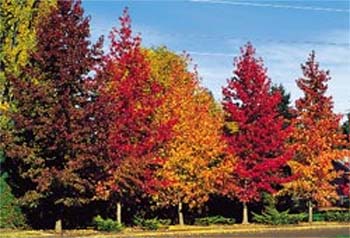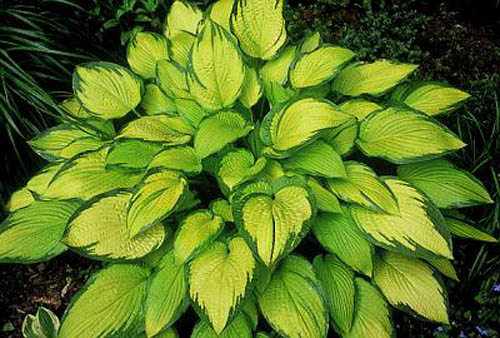In this month’s Yard Talk we will look at mulch and mulching (Cedar Chips, Cypress, Bark, Cocoa Beans, Stone, Straw, and More). First, let’s take a look at why we should mulch in the first place. Applying mulch to your garden is a good conservation practice. Thick mulch helps prevent loss of top soil from wind and water erosion. Mulching reduces soil compaction, decreases water loss from the soil through evaporation, and lessens soil temperature fluctuations. Mulch tempers the effects of heat and cold. In the winter months the soil in a garden heaves between the combined effects of freezing, thawing and then refreezing, which also can damage plants and shrubs. A layer of mulch over soil acts as an insulator by keeping it cool in the summer months and mulch helps eliminate danger to plants from the freeze-thaw cycle.
Organic mulch decomposes and becomes part of the soil, improving drainage, organic content, and texture. Microbes work by the millions to break down the organic matter and turn it into humus, this buffers the soil pH and improves the soil. A continuous supply of mulch means the bacterial and fungal activity can crowd out the bad stuff. Since pathogenic and pest activities are reduced, your plants should be healthier. Mulching enriches and protects soil thus, helping to provide a better growing environment.
Organic mulch is also important from the visual perspective. How others see our garden is very important to most gardeners. Mulch keeps our gardens neat and trim. Mulch is useful for weed suppression and control. Mulch comes in a variety of colors and textures to meet your needs. Gone are the days of wood chips and pine bark. Many companies now offer wood and bark chips that have been colorized to match a gardens decor. Colleges and universities now have their landscape areas mulched to match their “school colors.” What true Nebraska “Husker” Fan would be without his or her own perennial bed mulched in red and white.
Inorganic mulch like stones, black plastic and landscape fabric are also useful tools. Stones and marble chips do the same job as organic mulches. They lend a more formal look to a landscape and help prevent weeds. Most inorganic mulch is used with plastic sheeting to stifle weed growth. Landscaping fabric is an alternative to plastic sheeting that offers a barrier while allowing water to pass through into the soil. They allow the soil to breathe and absorb oxygen unlike plastic sheeting. While inorganic mulches have their place in the garden, they lack the soil improving properties of organic mulches. An inorganic mulch may be difficult to remove if you decide to change your garden plans later.
Mulching is one of the simplest and most beneficial tools you can use in the garden. Mulching then does the following:
- Protects the soil
- Reduces compaction
- Conserves moisture
- Maintains an even soil temperature
- Prevents weed growth
- Enriches the soil
- Makes the garden look good
In choosing a mulch, consider first what is available in your area. The best place to look at different types of mulch is at a garden center. A mulch with course particles remains loose and lasts longer so it’s a better choice. A mulch with fine particles can become compacted and will decompose faster.
Most of us have grass clippings that can be recycled as mulch when dry and shredded. Vegetables will benefit from dried grass clippings that are rich in nitrogen. Do not use grass clippings that were treated with broad-leaf weed killers. Leaves are a good source of organic mulch if ground up. You can buy wood bark chips and nuggets in bags, which cover roughly 10-12 square feet spread 2-3 inch thick. A better way is to buy bark chips in bulk form. In some communities the local tree services offers bark chips.
Types of mulch:
- Bark chips – biodegradable, apply 2-3 inches. Advantages: Attractive, good for permanent mulch, and reusable. Disadvantages: May hinder water penetration. Decomposes slowly unless composted first.
- Brick chips – will not decompose, apply 2-3 inches. Advantages: Cheaper than stone mulch and non-flammable. Disadvantages: Not readily available, high moisture retention, and no organic matter added.
- Compost – biodegradable, apply 1-2 inches. Advantages: Contributes nutrients, turns quickly to humus. Disadvantages: Needs heating period to kill off weed seeds and diseases and may have unpleasant odor.
- Corncobs and cornstalks – biodegradable, apply 3-4 inches. Advantages: Readily available in most areas and good weed control. Disadvantages: Water cannot penetrate well and may generate heat.
- Cottonseed hulls – biodegradable, apply 2-4 inches. Advantages: Fertilizing value similar cottonseed meal. Disadvantages: Very light, wind scatters.
- Grass clippings – biodegradable, apply 2-3 inches. Advantages: Improves soil by adding organic matter. Disadvantages: Absorbent, may carry weed seed.
- Hay – biodegradable, apply 4-6 inches. Advantages: Legume hays (alfalfa) add nitrogen. Disadvantages: First cut hay full of weed seeds and offers poor weed control.
- Leaves – biodegradable, apply 2-3 inches. Advantages: Contain many trace minerals, best food for earthworms. Disadvantages: May become soggy and pack, hindering water penetration.
- Paper – biodegradable, apply 5-6 pages or 4-6 inches, shredded. Advantages: May add trace minerals, decomposes readily. Disadvantages: May pack and hinder water penetration.
- Peanut hulls – biodegradable, apply 2-3 inches. Advantages: Adds nitrogen, phosphorus, potassium and decomposes rapidly. Disadvantages: Not readily available in North.
- Peat moss – biodegradable, apply 3-5 inches. Advantages: Clean and free of weed seeds and improves water retention when tilled into sandy soil. Disadvantages: Extremely absorbent, water penetration hindered and expensive.
- Pine needles – biodegradable, apply 3-4 inches. Advantages: Light, usually free of weed seeds, absorbs little moisture nor does it pack. Disadvantages: Decomposes very slowly.
- Polyethylene – will not decompose, apply one layer. Advantages: Retains but absorbs no moisture, black is effective weed control. Disadvantages: Weeds grow under clear plastic and rain will not go through easily.
- Rock – crushed gravel or marble chips, will not decompose, apply 1-2 inches. Advantages: Relatively inexpensive, not absorbent, water penetrates, and non-flammable. Disadvantages: Poor weed control and adds no organic matter to soil.
- Salt marsh hay – biodegradable, apply 4-6 inches. Advantages: Usually weed-free; available in marshy areas or along coast, very long lasting. Disadvantages: Not available to everyone. Expensive if purchased.
- Straw – biodegradable, apply 4-6 inches. Advantages: Adds nutrients and lightens soil when tilled under. Disadvantages: Can be a fire hazard.
- Vermiculite or perlite: will not decompose, apply 1-2 inches. Advantages: Totally sterile, so will not carry disease and no weed seeds. Disadvantages: Expensive, very light; scatters, and hinders water penetration.
- Cocoa bean shells – biodegradable, apply 4-6 inches. Advantages: attractive color and smell. Disadvantages: Poor water retention, will float out in heavy rains, and makes you want to eat a chocolate bar.
Agricultural publication G06960 Revised July 31, 1998 has reference charts that will help you select which is best for your application.
While cypress chips make an excellent long lasting mulch, we prefer to use other materials for environmental reasons. This endangered slow growing tree is being indiscriminately harvested to be ground into chips throughout the south. Our favorite mulch is 100% pure shredded sawmill bark that has been double ground. This has excellent uniform texture, color, and decomposition rate plus we like how it sets off our plants. A shredded double ground hardwood mulch with bark would be our second choice. We try to avoid soft woods and fruit woods because as a rule they contain a lot of resins.
When to apply mulch depends on what you hope to achieve by mulching. Mulch, by providing an insulating barrier between the soil and the air, moderate the soil temperature. This means that a mulched soil in the summer will be cooler than an unmulched soil. While in the winter, the mulched soil may not freeze as deeply. If you are using mulches in your perennial garden, it is best to apply them after the soil has warmed up in the spring. Wait until the soil has warmed completely if you are adding additional mulch to existing perennial bed. Mulches used to help with winter temperatures can be applied late in the fall after the ground has frozen. Applying mulches before the ground has frozen may attract rodents looking for a warm overwintering site.
Mulches are the gardener’s best friend, they reduce maintenance while adding to the garden’s beauty. The best mulch for you depends on many factors but basically boils down to what works best with your landscape. The cheapest mulch is not always the best you must consider what look you want to achieve. How often we have heard that the appearance of a mulch has no place in the selection process. We feel this is wrong, just look at your landscape areas. The area around the planting is what you focus on. A good mulch, be it cocoa beans or tar paper, is the one that sets off your plants the best.



